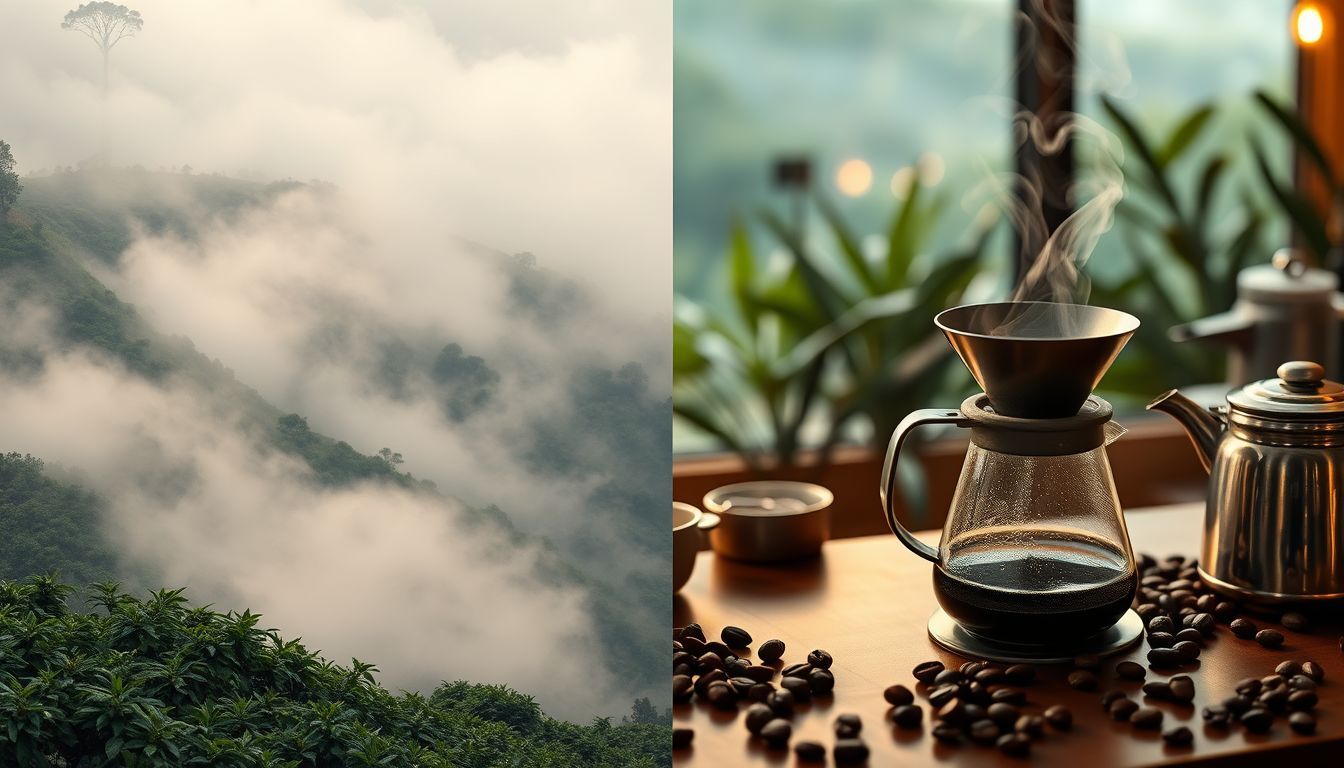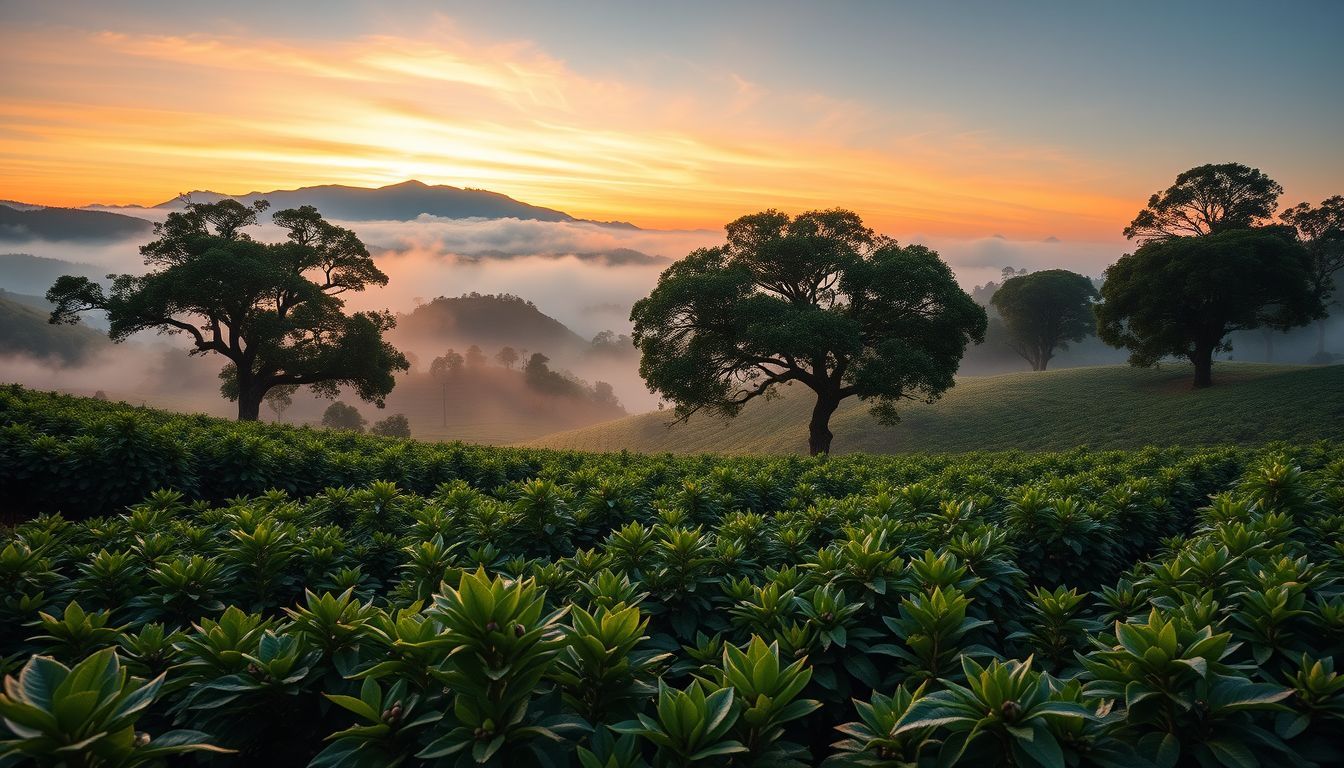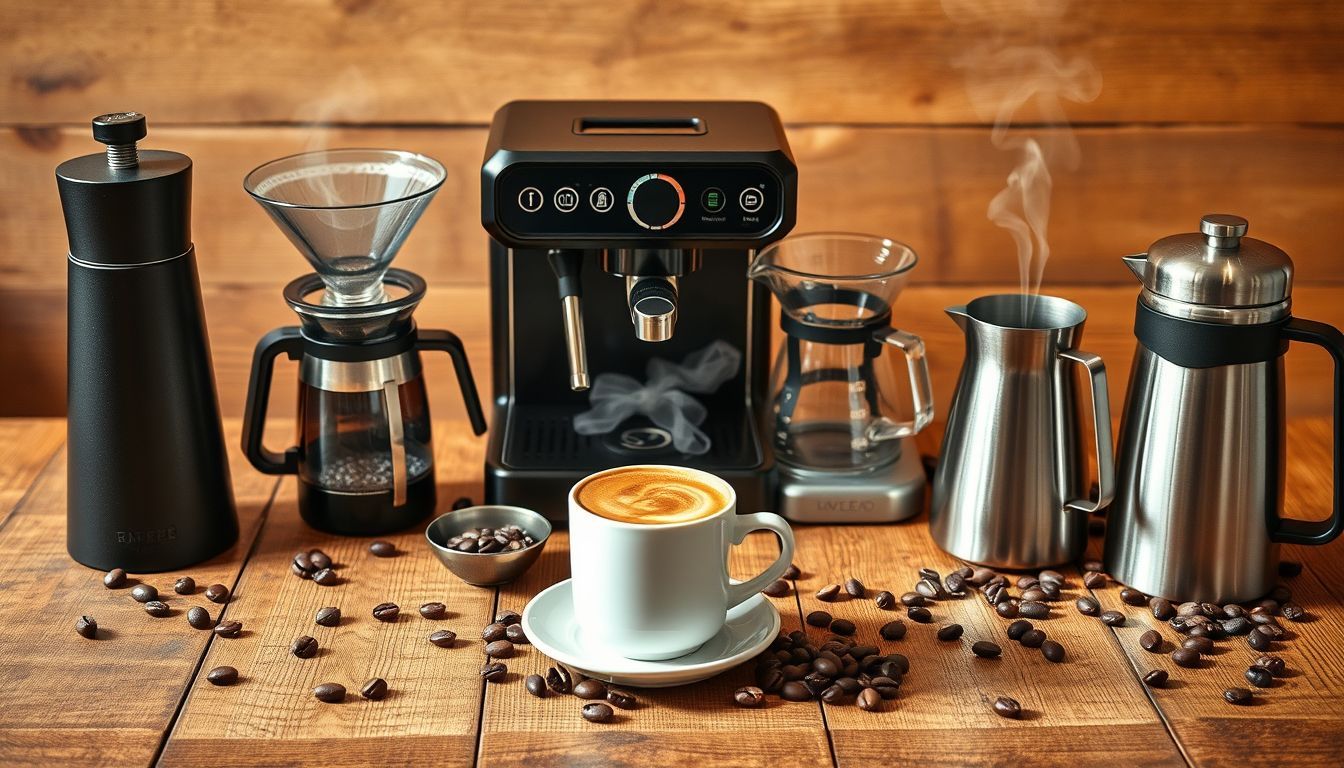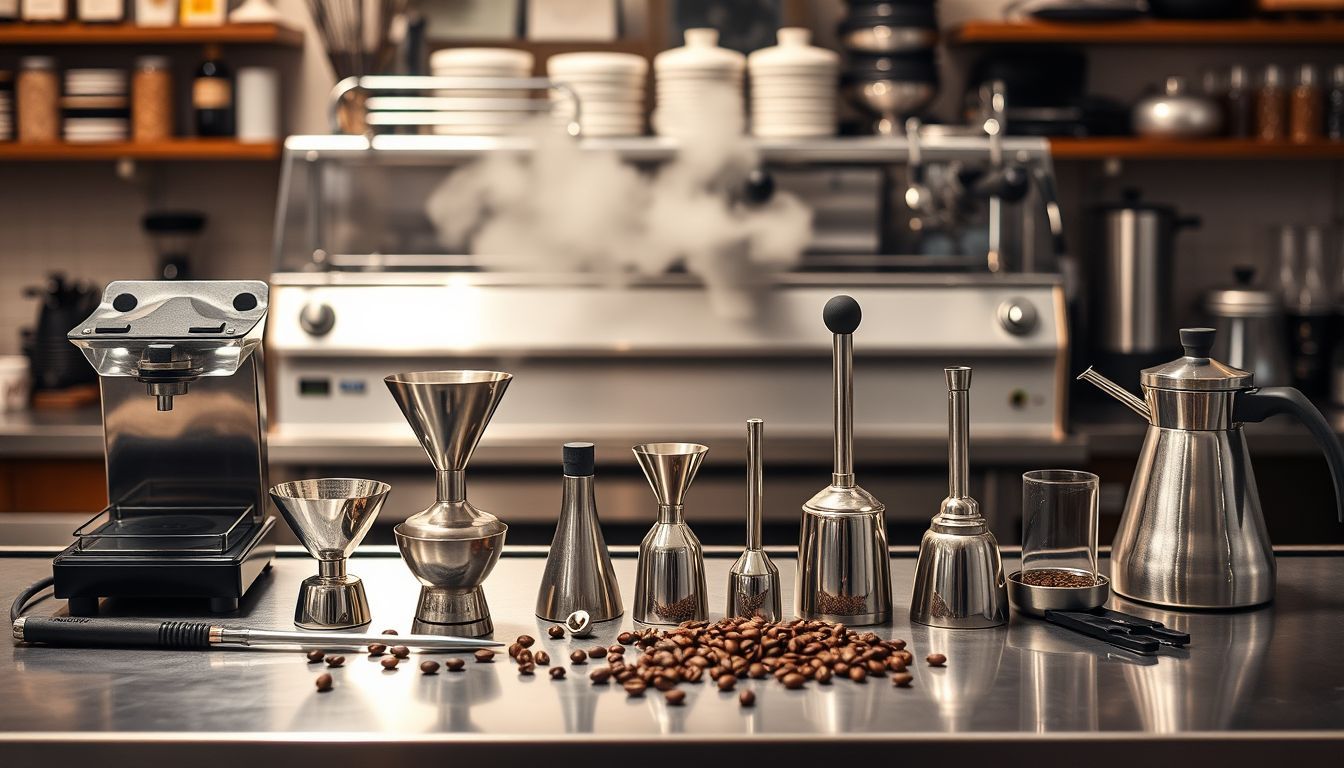The Influence of Microclimates on Coffee Cupping and How to Adapt Your Brewing at Home
Discover how tiny climate variations shape coffee's soul and learn to honor these microclimate whispers through thoughtful brewing adaptations in your own kitchen.

Amazon Affiliate Disclosure
This post contains affiliate links. If you purchase through these links, we may earn a small commission at no additional cost to you.
The Influence of Microclimates on Coffee Cupping and How to Adapt Your Brewing at Home
There's a moment during cupping when you realize that the coffee in your spoon carries more than just flavor—it carries the memory of morning mists that clung to a particular hillside, the whisper of afternoon breezes that danced through specific rows of coffee trees, and the gentle persistence of seasonal rains that fell on just one corner of a farm. This is the profound influence of microclimate, those intimate pockets of weather that exist within larger climate zones, creating coffee that speaks not just of its region, but of its exact place in the world.
As I've traveled from farm to farm, cupping table to cupping table, I've come to understand that microclimate is perhaps the most nuanced and overlooked factor in coffee's journey from seed to cup. It's the difference between two lots grown just a few hundred meters apart, yet expressing entirely different personalities. And more importantly for us as home brewers, understanding these microclimate influences can transform how we approach our daily brewing ritual.
The Poetry of Place: Understanding Microclimates in Coffee
A microclimate is nature's way of creating intimate spaces within larger environments. While a region might be classified as having a tropical highland climate, within that designation exist countless smaller climate pockets—each with its own personality, its own rhythm of temperature, humidity, wind patterns, and precipitation.
I remember walking through a single farm in the Antigua region of Guatemala with the farmer, Don Carlos, who pointed out how his coffee plants on the eastern slope of his property ripened two weeks earlier than those on the western slope, despite being at nearly identical elevations. "The morning sun here," he explained, touching a coffee cherry, "it wakes up differently than the afternoon sun over there." This simple observation revealed the profound truth of microclimate: coffee doesn't just grow in a place, it grows in a very specific version of that place.
The Elements of Microclimate
Topographical Influences: The shape of the land creates its own weather patterns. A small valley might trap cool air and morning mist, while a ridge might experience constant breezes that dry the coffee cherries more quickly during processing.
Canopy and Shade: The presence of shade trees, their species, density, and height all create unique light and temperature patterns throughout the day. A coffee plant growing under a dense canopy of Inga trees experiences a completely different daily rhythm than one growing under scattered Gravilea.
Water Sources: Proximity to streams, rivers, or even seasonal water flows creates humidity pockets and temperature moderation that can dramatically influence coffee development.
Soil Variations: Even within a single farm, soil composition can vary dramatically, affecting drainage, nutrient availability, and root development—all of which influence how the plant responds to its immediate climate.
Reading the Microclimate Story in Your Cup
When I cup coffees, I'm not just tasting flavor—I'm reading the autobiography that each microclimate has written into the beans. These stories reveal themselves in subtle but distinct ways:
The Morning Mist Signature
Coffees grown in areas that experience regular morning fog often develop what I call a "soft brightness"—acidity that's present but gentle, wrapped in a silky body that speaks of slow, even ripening in cool, humid conditions. These coffees often benefit from brewing methods that honor their delicate nature.
The Wind-Kissed Character
Beans from plants that experience consistent breezes tend to develop more concentrated flavors and firmer body. The constant air movement stresses the plant just enough to encourage the production of more complex compounds, resulting in coffees with excellent clarity and definition.
The Valley Floor Richness
Coffees grown in protected valleys, where cool air settles and humidity lingers, often express deeper, more grounded flavors—chocolate, nuts, and earth tones that speak of the protected, nurturing environment in which they developed.
The Ridge Runner Brightness
Plants growing on exposed ridges, where they experience dramatic temperature swings and intense sunlight, often produce beans with vibrant acidity and complex fruit notes—the plant's response to the challenging but invigorating conditions.
Cupping with Microclimate Awareness
When I approach a cupping table now, I bring not just my palate but my understanding of the microclimate story each coffee might tell. This awareness has transformed how I evaluate and appreciate coffee:
The Setup: Honoring Origin Conditions
I've learned to adjust my cupping protocol based on what I know about a coffee's microclimate origins. For coffees from high-humidity microclimates, I might use slightly cooler water to preserve the delicate aromatics that developed in those misty conditions. For wind-exposed coffees, I might extend the steeping time slightly to fully extract the concentrated flavors.
Reading Between the Sips
During cupping, I pay attention to how flavors evolve as the coffee cools—this temperature journey often reveals microclimate influences. Coffees from stable microclimates tend to maintain consistent flavor profiles as they cool, while those from more variable conditions might reveal different notes at different temperatures.
The Aromatics Tell Tales
The fragrance and aroma stages of cupping become particularly revealing when viewed through a microclimate lens. Floral notes often indicate morning mist and gentle conditions, while intense fruit aromatics might suggest dramatic temperature swings or specific soil-climate interactions.
Translating Microclimate Understanding to Home Brewing
The real magic happens when we take this microclimate awareness from the cupping table to our home brewing setup. Understanding how microclimate influenced your coffee's development allows you to make brewing decisions that honor and enhance those characteristics.
Brewing for Morning Mist Coffees
Characteristics: Soft acidity, silky body, delicate aromatics
Brewing Adaptations:
- Water Temperature: 195-200°F to preserve delicate compounds
- Grind Size: Medium-fine to encourage gentle extraction
- Brewing Method: Pour-over methods like V60 or Chemex that highlight clarity
- Timing: Slower, more controlled pours to match the coffee's gentle nature
- Ratio: 1:16 to 1:17 to allow the subtle flavors to shine without overwhelming
I remember brewing a coffee from a misty valley in Costa Rica's Tarrazú region. The first time I used my standard hot water and quick pour technique, the coffee tasted flat and muted. When I dropped the temperature by 10 degrees and slowed my pour to match the patient rhythm of those morning mists, the coffee bloomed with jasmine aromatics and honey sweetness.
Brewing for Wind-Exposed Ridge Coffees
Characteristics: Concentrated flavors, firm body, bright acidity
Brewing Adaptations:
- Water Temperature: 200-205°F to fully extract concentrated compounds
- Grind Size: Medium to medium-coarse to prevent over-extraction
- Brewing Method: French press or AeroPress to capture full body
- Timing: Standard to slightly extended contact time
- Ratio: 1:15 to 1:16 to handle the intensity
A coffee from an exposed ridge in Ethiopia's Yirgacheffe region taught me this lesson. Its concentrated flavors needed the full heat and extended contact time to properly develop, revealing layers of bergamot and stone fruit that lighter brewing couldn't access.
Brewing for Protected Valley Coffees
Characteristics: Rich body, chocolate and nut notes, moderate acidity
Brewing Adaptations:
- Water Temperature: 200-203°F for balanced extraction
- Grind Size: Medium to capture both body and clarity
- Brewing Method: Clever Dripper or pour-over with longer contact time
- Timing: Extended steeping to develop richness
- Ratio: 1:15 to 1:16 for full body development
Brewing for Diverse Microclimate Blends
Characteristics: Complex, layered, changing flavor profile
Brewing Adaptations:
- Water Temperature: 200-202°F as a middle ground
- Grind Size: Medium for balanced extraction
- Brewing Method: Methods that allow for temperature variation like pour-over
- Timing: Variable pour speeds to extract different components
- Ratio: 1:16 as a starting point, adjusting based on dominant characteristics
Advanced Microclimate Brewing Techniques
Temperature Stepping
For coffees from highly variable microclimates, I sometimes use a temperature stepping technique—starting with cooler water to extract delicate compounds, then finishing with hotter water to pull out the more robust flavors. This mimics the daily temperature variations the coffee experienced during growth.
Bloom Time Variations
The bloom time can be adjusted based on microclimate characteristics. Coffees from high-humidity environments often benefit from longer bloom times (45-60 seconds) to allow for proper degassing, while those from dry, windy conditions might need shorter blooms (30-45 seconds).
Grind Distribution Awareness
Microclimate influences can affect bean density and structure, which in turn affects how they grind. I've learned to pay attention to grind distribution and adjust accordingly—denser beans from challenging microclimates might need slightly coarser grinds to prevent over-extraction.
Seasonal Considerations: When Microclimate Meets Your Kitchen
Your own kitchen has its microclimate too, and this interacts with your coffee in fascinating ways:
Humidity Interactions
During humid summer months, I often adjust my brewing for coffees from dry microclimates, as the ambient humidity can affect extraction. Conversely, during dry winter months, coffees from humid microclimates might need slight adjustments to maintain their characteristic softness.
Temperature Stability
The temperature stability of your brewing environment affects how microclimate characteristics express themselves. A drafty kitchen might emphasize the bright, wind-kissed qualities of ridge-grown coffees, while a warm, stable environment might bring out the gentle qualities of valley-grown beans.
Building Your Microclimate Brewing Library
Over time, I've developed what I think of as a "microclimate brewing library"—a collection of brewing approaches matched to different microclimate signatures. This isn't about rigid rules but about developing sensitivity to the subtle ways that place expresses itself in coffee.
Keeping Brewing Notes
I recommend keeping notes not just on brewing parameters but on the microclimate story of each coffee. Note the farm's elevation, aspect, shade coverage, and any other environmental details you can gather. Over time, patterns emerge that inform your brewing decisions.
Experimenting with Intention
When trying a new coffee, consider what you know about its growing conditions and let that guide your initial brewing approach. Then experiment from that informed starting point rather than using a one-size-fits-all method.
The Dialogue Between Place and Palate
Ultimately, brewing with microclimate awareness is about creating a dialogue between the place where the coffee grew and the place where you're brewing it. It's about recognizing that every coffee carries the memory of its specific environment and that our role as brewers is to help that memory express itself fully.
This approach has taught me that brewing is not just about extraction and technique—it's about translation. We're translating the language of microclimate into the language of flavor, helping the coffee tell its story of morning mists and afternoon breezes, of protected valleys and wind-swept ridges.
Conclusion: Brewing with Reverence for Place
As I write this, I'm sipping a coffee from a small farm in Panama's Boquete region, grown on a slope that faces the morning sun but is protected from afternoon winds by a stand of ancient trees. I brewed it with slightly cooler water and a gentle pour, honoring the protected, nurturing microclimate that shaped its development. The result is a cup that tastes not just of coffee, but of place—of that specific hillside, that particular interplay of sun and shade, wind and shelter.
This is the gift of microclimate awareness: it transforms brewing from a mechanical process into an act of connection. When we understand how the intimate details of place shaped our coffee, we can brew with intention that honors that relationship. We become not just coffee drinkers but participants in a conversation that began in a specific patch of earth, under a particular sky, in the embrace of a unique microclimate.
Every morning, as you prepare your coffee, you have the opportunity to complete this conversation—to take the whispered secrets of microclimate and give them voice through thoughtful brewing. In doing so, you're not just making coffee; you're celebrating the profound relationship between place and flavor, between the natural world and the cup in your hands.
The next time you taste your coffee, pause for a moment and listen. Can you hear the morning mist? Can you feel the afternoon breeze? Can you sense the protection of the valley or the challenge of the ridge? These are the voices of microclimate, speaking to you across continents and seasons, reminding you that every great cup of coffee is ultimately a love letter from a very specific place on earth.

Ben Carter
I spent the first part of my life learning the language of the wild—the rustle of leaves, the silence of snow, the resilience of a lone tree. In my writing, I try to translate that language, exploring how the landscapes around us shape the landscapes within us. My stories are quiet, but I hope they speak to a deeper part of you.


